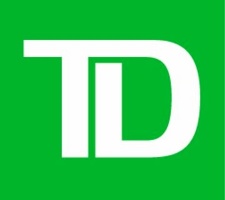You are now leaving our website and entering a third-party website over which we have no control.
Tax Resource Centre
Taxes are an important consideration when making any investment decision. The TD Asset Management Inc. tax resource centre is here to provide you with important tax related tools and resources for your registered savings plans, mutual funds, and exchange-traded funds (ETFs) to help you make informed decisions.
Important Information About Your Tax Slips
New for the 2024 Tax Year
For the 2024 tax year, individual investors may see additional boxes on their tax reporting slips that indicate whether a capital gain was realized before or after June 25, 2024. On June 10, 2024, the Department of Finance tabled a Notice of Ways and Means Motion to implement the increase in the capital gains inclusion rate announced in the 2024 Federal Budget. However, the Government of Canada recently announced a deferral of the proposed change to the capital gains inclusion rate to 2026. Note that CRA reporting tax slip formats for 2024 have not been updated to reflect this deferral announcement and that tax slips will display
two reporting periods for 2024.
For more information related to the deferral, please visit:
https://www.canada.ca/en/department-finance/news/2025/01/government-of-canada-announces-deferral-in-implementation-of-change-to-capital-gains-inclusion-rate.html
For an ETF held in a non-registered account, you will receive a T3/R16 tax slip for distributions received during the tax year from the dealer where you hold your units.
For mutual funds, your T3/R16 tax slips are sent directly by the mutual fund issuer.
Slips are required to be mailed by the end of March.For the breakdown of TD Mutual Funds and TD ETFs distributions for the year, refer to Fund Distributions below.
Tax & Retirement Planning
At TD Asset Management Inc. (TDAM), we understand the importance of tax planning to investors. There are many tax-efficient investment vehicles available to Canadians to help maximize after-tax income and grow their investment portfolios.
For example, you may consider using a Registered Retirement Savings Plan (RRSP) or Tax-Free Savings Account (TFSA) to save for retirement or a Registered Education Savings Plan (RESP) for a child’s education. You may also want to take advantage of appropriate deductions and government sponsored benefits. In addition, consider whether it is advantageous to hold investments that earn relatively tax-efficient income, such as Canadian dividends or capital gains.
TDAM has created this guide to help outline some tax planning information.
Tax Insights
Fund Distributions
How Do Mutual Fund Distributions Work?
Distributions paid by mutual funds represent earnings generated by different types of investments held in the fund. As these investments earn income or are sold by the fund, the earnings are distributed in various ways. Depending on the source of the earnings, mutual fund distributions can have different tax implications and should be clearly understood for efficient tax planning.
 Canada
Canada

